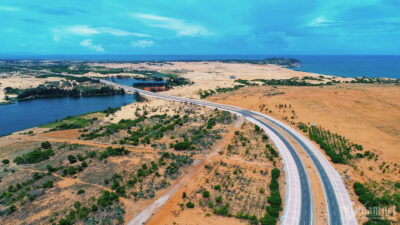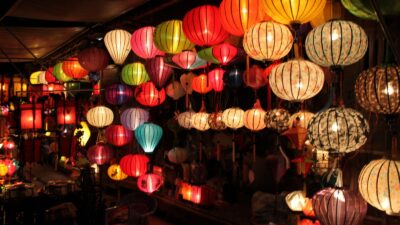Vietnam is not only famous for its breathtaking landscapes and rich cuisine but also for its incredible cultural diversity. With 54 officially recognized ethnic groups, the country is a true mosaic of languages, traditions, customs, and lifestyles. One of the best ways to explore this diversity is by visiting the many ethnic minority villages in Vietnam—where time-honored customs and community life remain beautifully preserved.
Whether you’re an adventure seeker, cultural enthusiast, or responsible traveler, this guide to ethnic minority villages in Vietnam will help you plan a meaningful journey that goes beyond sightseeing with VietnamTour.
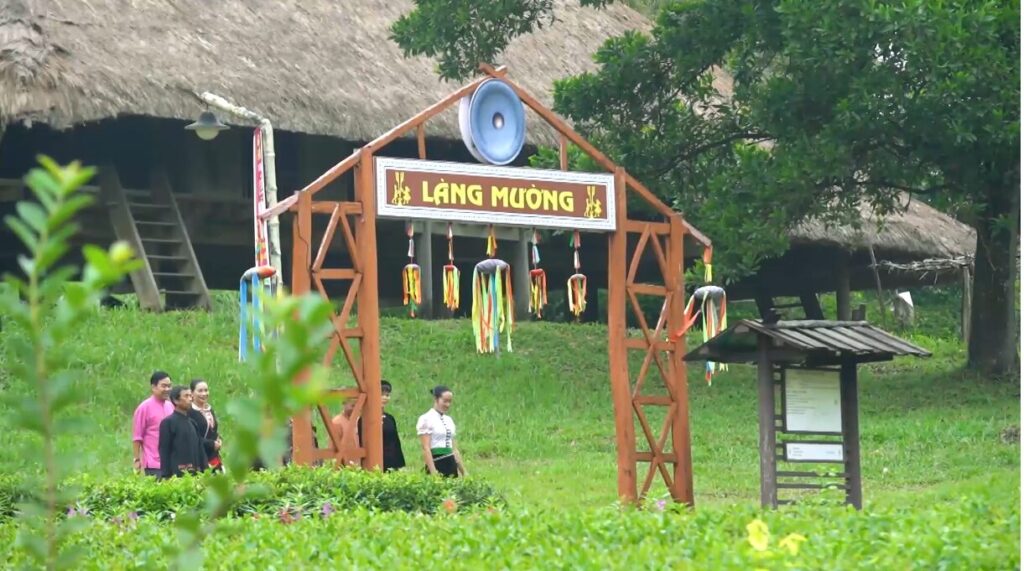
1. What Are Ethnic Minority Villages in Vietnam?
Ethnic minority villages in Vietnam refer to traditional settlements where specific ethnic groups live, typically in the mountainous and rural regions of Northern and Central Vietnam, as well as parts of the Central Highlands and the South.
These villages serve as living museums of Vietnamese culture—offering an immersive look at the day-to-day lives of groups such as the H’mong, Dao, Tay, Thai, Ede, Bahnar, and many more. Each community retains its own:
- Language
- Traditional clothing
- Architecture
- Religious practices
- Food and farming methods
Visiting these villages provides travelers with the unique opportunity to connect directly with people who live in harmony with their environment and ancestral ways of life.
2. Why Visit Ethnic Minority Villages in Vietnam?
2.1. Experience Authentic Local Culture
Unlike modern cities, ethnic villages retain deep-rooted cultural identities. From traditional musical performances and craft-making to spiritual rituals and agricultural life, every activity offers a chance to connect with something timeless and meaningful.
2.2. Participate in Traditional Crafts and Daily Life
In many ethnic villages, you can take part in daily activities:
- Learn how to weave brocade or dye fabric using indigo
- Join a farming family during the harvest season
- Cook traditional meals with local ingredients
- Explore the significance of tribal ceremonies and festivals

2.3. Enjoy Unique Architecture
Each ethnic group has a distinct architectural style:
- The Thai build stilt houses along riverbanks
- The Ede live in longhouses with matriarchal structures
- The H’mong build earthen-wall houses on mountaintops
- The Bahnar are known for their towering rong houses
These buildings reflect the environment, climate, and social structures of the communities.
2.4. Promote Sustainable and Responsible Travel
Many ethnic minority villages in Vietnam now participate in community-based tourism (CBT). This means your visit supports local families, protects cultural heritage, and encourages eco-friendly practices.
3. Top Ethnic Minority Villages to Visit in Vietnam
3.1. Ta Van Village (Sapa, Lao Cai)
- Ethnic group: H’mong, Dao, Giay
- Location: 10 km from Sapa town
- Highlights: Rice terraces, homestays, herbal baths, handicrafts
Ta Van is part of Hoang Lien Son National Park and lies within the Muong Hoa Valley. Here, you can stay overnight in a Giay family’s stilt house, trek through stunning rice fields, and even take part in batik fabric dyeing workshops.
3.2. Ban Gioc Area (Cao Bang)
- Ethnic group: Tay and Nung
- Highlights: Lush hills, traditional stilt houses, waterfalls
Ban Gioc is known for its majestic waterfall and tranquil countryside. The Tay people here maintain their traditional agricultural lifestyle and are known for folk songs like Then singing, which has been recognized by UNESCO.
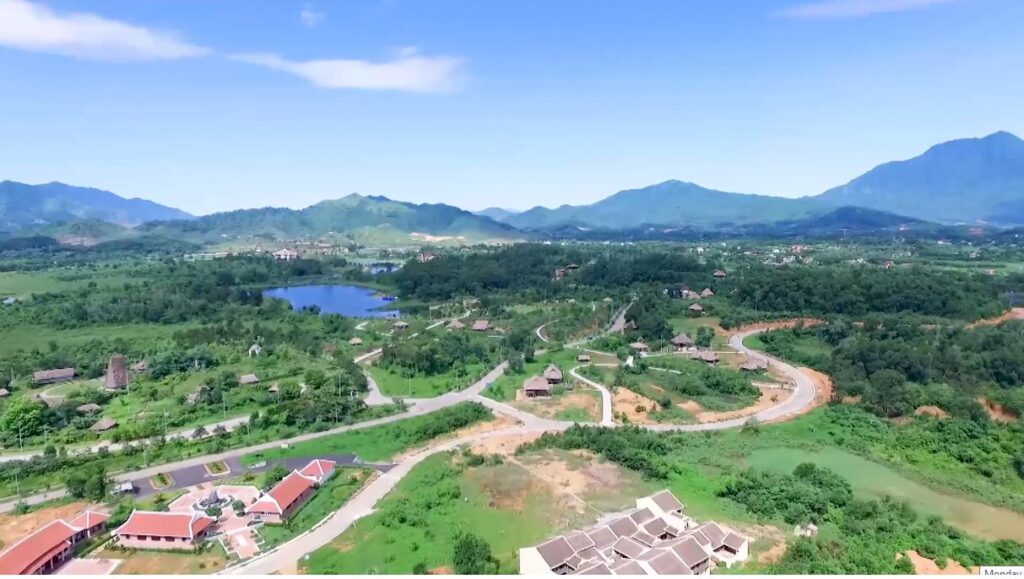
3.3. Kon K’tu Village (Kon Tum, Central Highlands)
- Ethnic group: Bahnar
- Highlights: Rong houses, gongs, buffalo raising
The Bahnar culture is deeply rooted in animism and community spirit. You can watch traditional gong performances, explore the large communal house, and even attend seasonal festivals involving dances and storytelling.
3.4. Buon Don (Dak Lak)
- Ethnic group: Ede
- Highlights: Longhouses, elephant culture, coffee farms
Buon Don is a central hub of Ede culture. Its matrilineal traditions, distinctive architecture, and historical role in elephant training make it a fascinating place to explore.
3.5. Lolo Village (Dong Van, Ha Giang)
- Ethnic group: Lolo
- Highlights: Colorful costumes, black earthen houses, border culture
Nestled near the Chinese border, this village is home to the Lolo people—known for their vibrant clothing and unique spiritual customs. This region offers a rare look at lesser-known ethnic traditions in remote northern Vietnam.
4. Suggested 3-Day Itinerary for Visiting Ethnic Minority Villages in Northern Vietnam
Day 1: Hanoi – Sapa – Ta Van Village
- Morning train or bus to Sapa
- Afternoon hike to Ta Van village
- Evening cultural show and dinner at a homestay
Day 2: Explore Giang Ta Chai and Lao Chai Villages
- Join a local guide for a full-day trekking experience
- Learn about H’mong herbal medicine and brocade weaving
- Visit waterfalls and scenic rice terraces
Day 3: Return to Hanoi or Continue to Ha Giang
- Optional visit to Cat Cat or Sin Chai villages
- Travel back to Hanoi or head further north for a Ha Giang Loop adventure
This itinerary is ideal for travelers interested in local immersion, light adventure, and nature.

5. Tips for Visiting Ethnic Minority Villages in Vietnam
5.1. Respect Local Customs
- Always ask before taking photos of people, especially elders or during rituals
- Remove shoes when entering homes
- Avoid excessive PDA (public displays of affection)
5.2. Dress Appropriately
Cover your shoulders and knees, particularly in sacred spaces or during ceremonies. Some ethnic groups, especially older generations, value modesty and traditional attire.
5.3. Learn a Few Words in the Local Language
A simple “hello” or “thank you” in H’mong, Tay, or Bahnar languages can go a long way in building connections.
5.4. Support Local Artisans
Instead of buying mass-produced souvenirs, look for handmade textiles, baskets, and jewelry made by local villagers. It’s a meaningful way to support traditional crafts.
5.5. Travel with Responsible Tour Operators
Look for operators that:
- Employ local guides
- Offer homestay experiences
- Follow environmental sustainability standards
- Reinvest profits into community projects
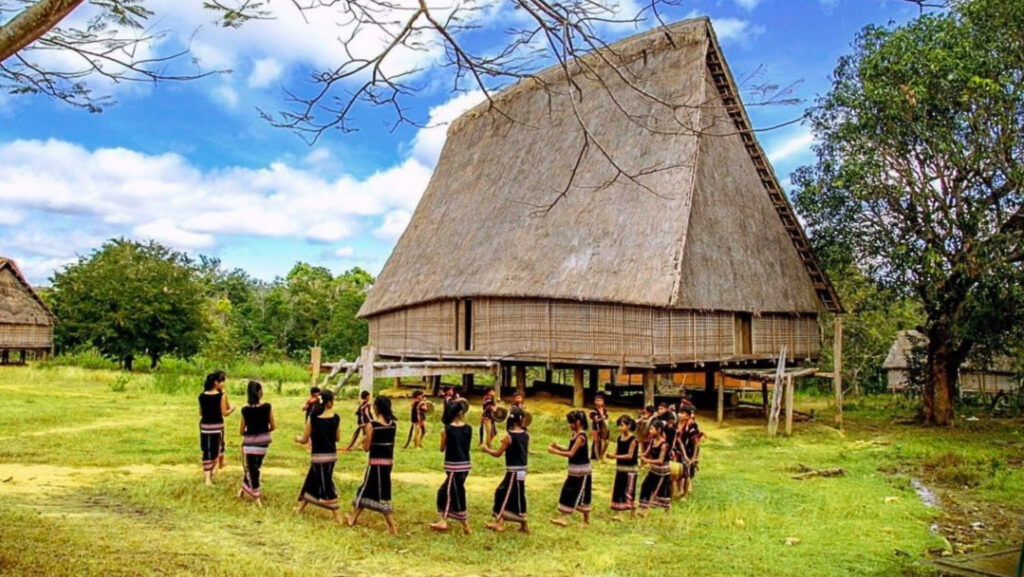
6. The Role of Cultural Villages in Vietnam’s Tourism Landscape
One significant project is the Vietnam National Village for Ethnic Culture and Tourism, located in Dong Mo, Son Tay (Hanoi). This cultural park was established to preserve and showcase the diversity of Vietnam’s ethnic minorities.
Highlights include:
- Reconstructed houses from over 30 ethnic groups
- Cultural festivals year-round
- Workshops in traditional crafts, music, and dance
- Educational tours for students and international visitors
It offers an ideal option for travelers short on time who still want to experience multiple cultures in one place.
7. Preserving Culture Through Community-Based Tourism
With globalization and modernization, many ethnic traditions are at risk of fading away. Community-based tourism (CBT) has emerged as a powerful tool to preserve cultural identity while improving livelihoods.
Ethnic minority villages in Vietnam benefit from CBT through:
- Better infrastructure (roads, schools, water supply)
- Increased income from tourism services
- Revival of cultural practices and pride among youth
- Greater environmental awareness and protection
As a traveler, your visit can have a lasting, positive impact—provided it is respectful and responsible.
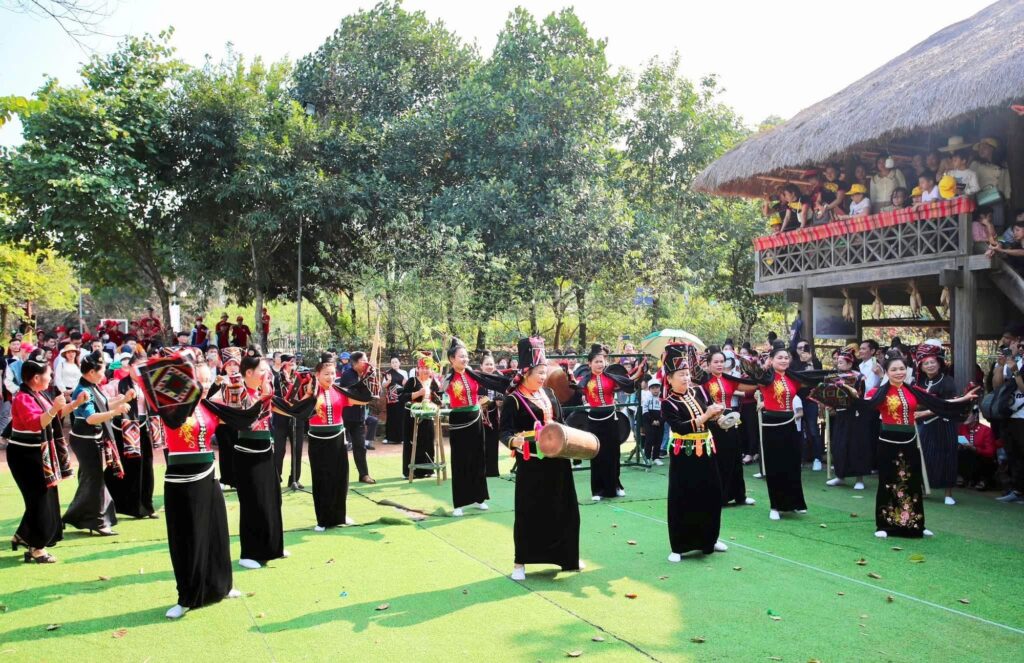
Why Ethnic Minority Villages in Vietnam Are Worth Visiting
Visiting ethnic minority villages in Vietnam is more than a cultural detour; it’s a journey into the heart of a nation defined by diversity and resilience. Whether you’re walking across terraced rice fields in Sapa, sharing a meal in a Bahnar longhouse, or learning to weave with a Lolo artisan, these encounters offer something that no museum or textbook can replicate.
If you’re planning a trip to Vietnam, don’t just check off the usual tourist attractions. Venture deeper. Let the colors, sounds, and stories of Vietnam’s ethnic villages guide you to a richer, more meaningful travel experience.
See more post: Mekong Delta Local Tour: Discover Authentic Life on the River


